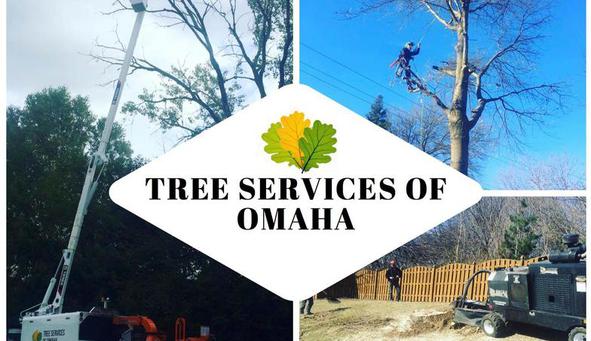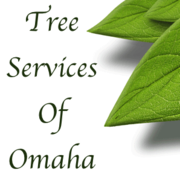Tree Services of Omaha - Omaha, Nebraska
American Linden Tree
by David Steg on 10/01/14
American Linden (Tilia americana)
Tree Services of Omaha
American linden (Tilia americana) is native along much
of the Missouri River that borders Nebraska. It is a
large tree with a rounded and very dense crown.
American linden, also known as basswood, has been a
favorite for planting in the city as well as around farm
homes. Because of its size and shape it makes an
excellent shade tree.
The Latin name for American linden, Tilia americana,
means simply linden of America. The tree is pyramidal
when it is young and as it matures the crown becomes
more rounded. The leaves are somewhat heart shaped
and it has a fragrant flower that is very attractive to
honey bees. As a matter of fact, the wood from linden
has been used for beehives since it is so light and yet
still has the strength to hold honeycombs. Honey that is
derived principally from the linden flower is generally
considered the best in the world. The wood is also a favorite for wood carvers since it is
so light and easy to work.
The seeds of American linden are rather unique. They are born on
leafy bract and are about the size of peas. They are quite visible
after the tree flowers in late spring.
Linden grows to be a large tree. The largest linden in the United
States is in Montgomery County, Pennsylvania and is 292 inches in
circumference and has a total height of 78 feet.
American linden is a moderate to fast growing tree. It enjoys full
sun locations and will tolerate a wide range of soil conditions. It
grows the best on well drained sites with deep topsoil. Linden is
very sensitive to drought, soil compaction, and flooding so it is not
often found on poorly drained bottomland or areas that are prone to flooding. It can also
be sensitive to herbicide damage. Lindens can sometimes suffer leaf scorch during long,
hot, dry spells in summer. It does not make a very good tree for planting in areas with
lots of pavement. Some cultivars of linden are mistakenly used in parking lots.
American linden should be given lots of room to grow so don’t plant it close to homes or
other buildings. Since it is a large tree it should not be planted around utility lines.
There are several cultivars of American linden, the most popular of which is Redmond lindens. Redmond lindens will retain the pyramidal form that younger American lindens
have. It makes an excellent tree for borders and is quite lovely if left to grow branches all
the way to the ground.



